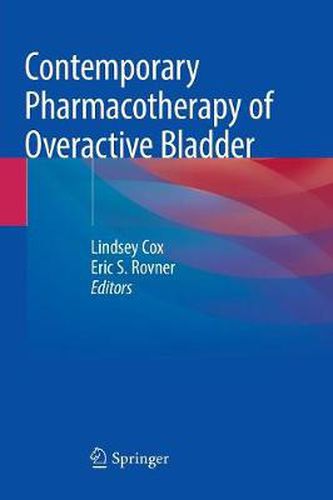Readings Newsletter
Become a Readings Member to make your shopping experience even easier.
Sign in or sign up for free!
You’re not far away from qualifying for FREE standard shipping within Australia
You’ve qualified for FREE standard shipping within Australia
The cart is loading…






This title is printed to order. This book may have been self-published. If so, we cannot guarantee the quality of the content. In the main most books will have gone through the editing process however some may not. We therefore suggest that you be aware of this before ordering this book. If in doubt check either the author or publisher’s details as we are unable to accept any returns unless they are faulty. Please contact us if you have any questions.
This text provides a comprehensive, state-of-the art review of pharmacotherapy for the overactive bladder, and serve as a valuable resource forclinicians, surgeons, and researchers with an interest in OAB. The early chapters will describe the pathophysiology of OAB, algorithm, and provide the readers with a practical guide for evaluating the OAB patient. The next section describes the unique challenges involved in the study of OAB and helps the reader navigate the complexities of the literature on the topic. All chapters are written by experts in their fields and include the most up-to-date scientific and clinical information. The text includes a review of the clinical guidelines for OAB, and a detailed description of the individual therapies, including antimuscarinics, Beta-3 agonists, (insert comma) and chemodenervation. Extensive tabulation of contemporary literature makes this a matchless resource that provides a detailed account of the current evidence for the use of each of these therapies. The text concludes with chapters on unique populations with OAB, and future directions in the research field.Contemporary Pharmacotherapy of Overactive Bladder unites a unique set of thought leaders in the field of voiding dysfunction to create a comprehensive resource that will be useful for a variety of clinicians who treat OAB, including urologists, urogynecologists, general gynecologists, family practitioners, and geriatricians.
$9.00 standard shipping within Australia
FREE standard shipping within Australia for orders over $100.00
Express & International shipping calculated at checkout
This title is printed to order. This book may have been self-published. If so, we cannot guarantee the quality of the content. In the main most books will have gone through the editing process however some may not. We therefore suggest that you be aware of this before ordering this book. If in doubt check either the author or publisher’s details as we are unable to accept any returns unless they are faulty. Please contact us if you have any questions.
This text provides a comprehensive, state-of-the art review of pharmacotherapy for the overactive bladder, and serve as a valuable resource forclinicians, surgeons, and researchers with an interest in OAB. The early chapters will describe the pathophysiology of OAB, algorithm, and provide the readers with a practical guide for evaluating the OAB patient. The next section describes the unique challenges involved in the study of OAB and helps the reader navigate the complexities of the literature on the topic. All chapters are written by experts in their fields and include the most up-to-date scientific and clinical information. The text includes a review of the clinical guidelines for OAB, and a detailed description of the individual therapies, including antimuscarinics, Beta-3 agonists, (insert comma) and chemodenervation. Extensive tabulation of contemporary literature makes this a matchless resource that provides a detailed account of the current evidence for the use of each of these therapies. The text concludes with chapters on unique populations with OAB, and future directions in the research field.Contemporary Pharmacotherapy of Overactive Bladder unites a unique set of thought leaders in the field of voiding dysfunction to create a comprehensive resource that will be useful for a variety of clinicians who treat OAB, including urologists, urogynecologists, general gynecologists, family practitioners, and geriatricians.